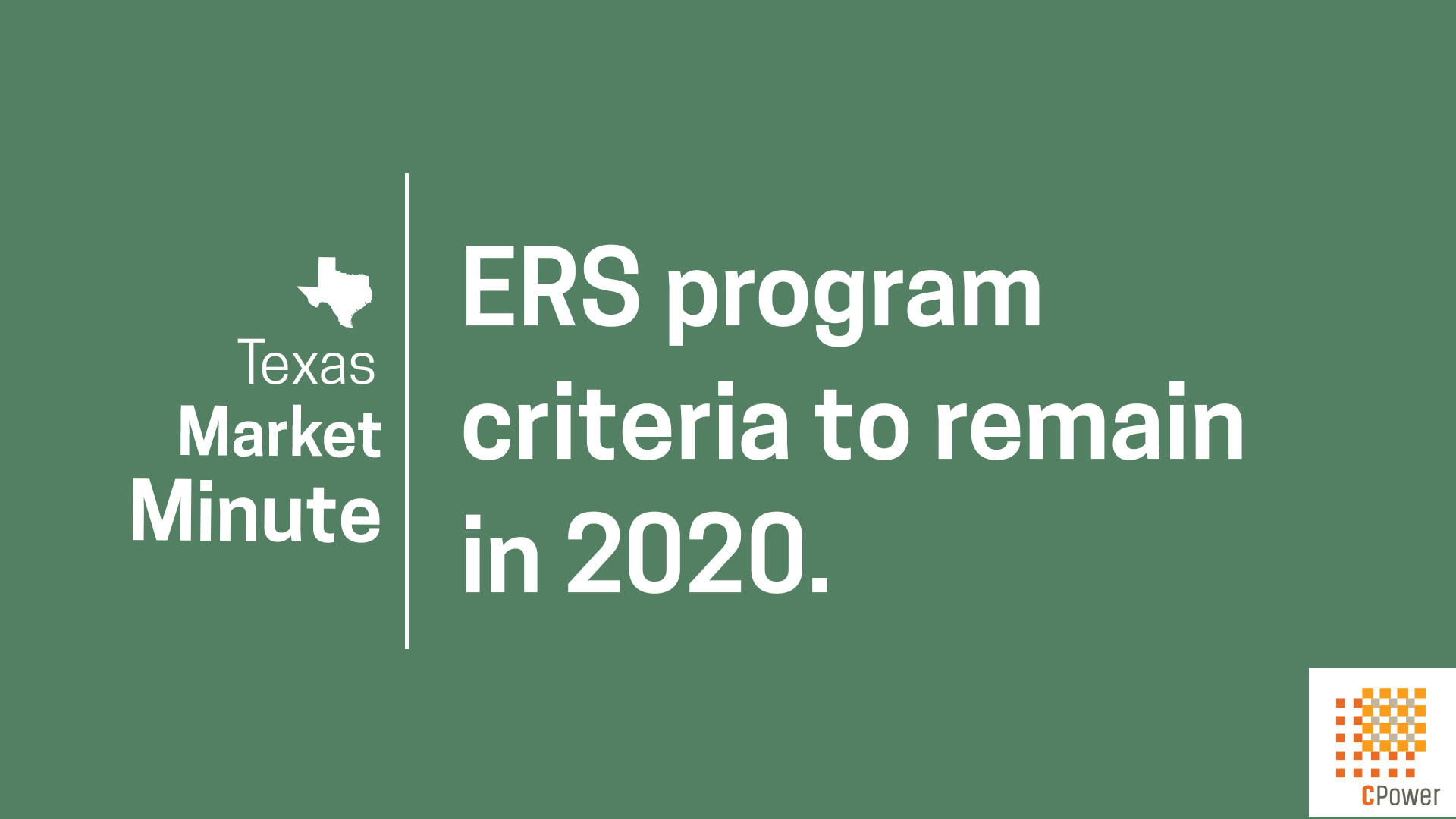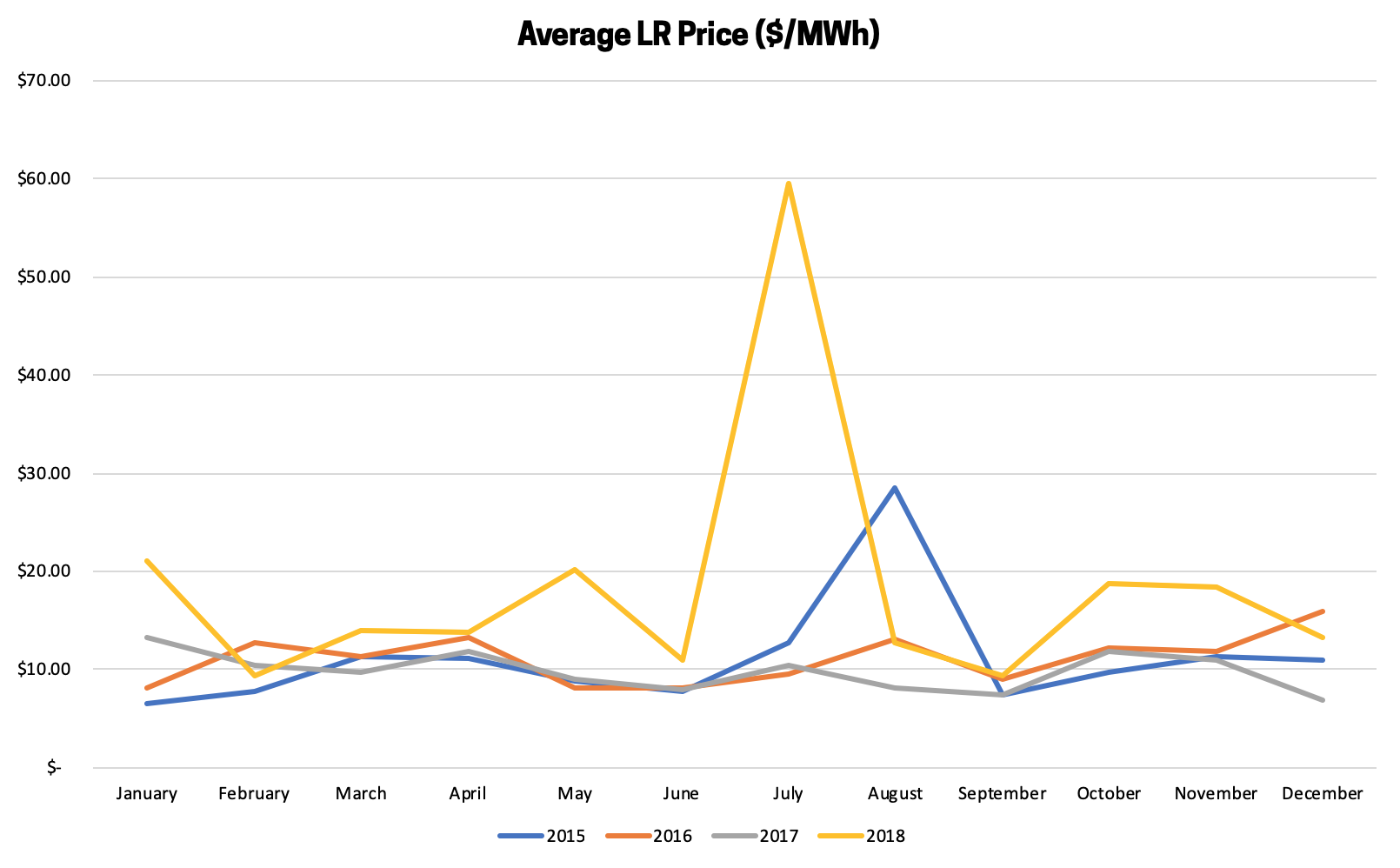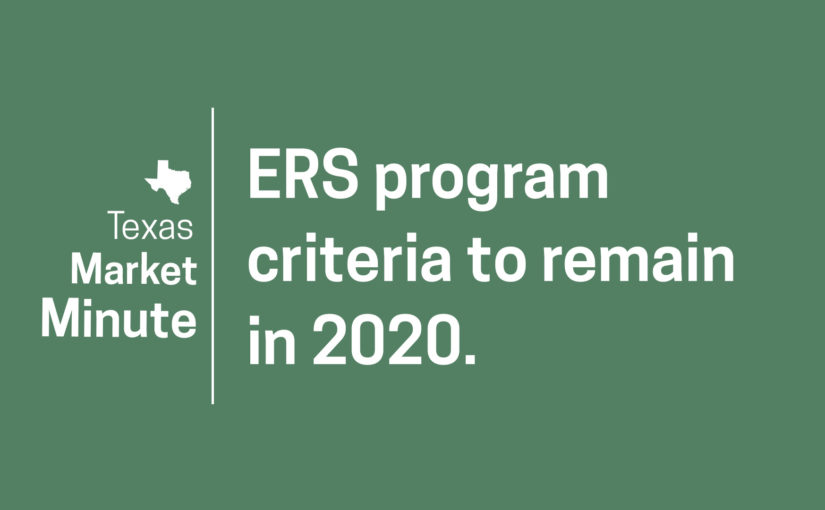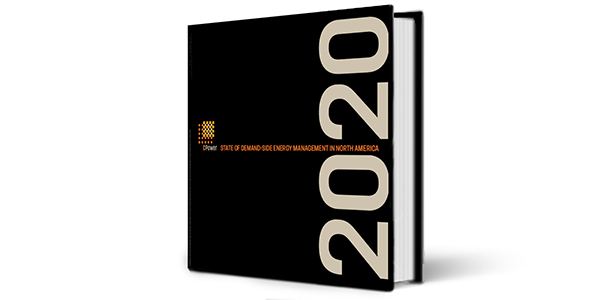ERCOT: ERS program criteria to remain in 2020 – Market Minute (Video)

In a recent letter to Qualified Scheduling Entities in Texas, ERCOT asserted that while the grid operator is sensitive to the distress organizations are feeling due to the current pandemic, ERCOT does NOT have the authority to alter the criteria applicable to Emergency Response Service (ERS) resources currently under contract.
If your organization is currently participating in the ERS program in 2020, you will be contractually obligated to perform under the program’s established criteria.
Some organizations in Texas are asking what happens if they can’t perform DR due to the COVID-19 pandemic.
ERCOT has stated that it DOES have the discretion to “consider mitigating factors, including Force Majeure Events, that may have impacted ERS event performance or availability when determining whether to suspend a QSE or ERS Resource that fails to meet performance or availability criteria.”
ERS participants who think they may be unable to adequately provide ERS resources as contracted should contact their Curtailment Service Provider to discuss their situation.
If you have any questions about this or any other Texas related energy question, contact CPower and we’ll help you in any way we can.
2020 State of Demand-Side Energy Management in North America
ERCOT’s Protocol for Dispatching Demand-Side Resources
As the state’s grid operator, ERCOT maintains a sophisticated system of levers and triggers that dispatch increasingly potent demand-side resources designed to help maintain balance when the demand for electricity outpaces the grid’s ability to supply it.
Understanding ERCOT’s system provides a context to help understand not only how demand-side resources are used in Texas, but also which of the demand response programs might be best for a given organization.
ERCOT’s arsenal for grid defense
When the grid is stressed, ERCOT takes the following steps to avoid blackouts across the state:
Real Time Pricing–this relies on basic economics to deter electricity consumption. As demand rises and approaches the reserve margin, prices start to rise. Large consumers monitor the real time price and determine it’s more economically sound to stop consuming (and producing in the commercial sector) given the escalating electricity prices.
If demand continues to rise…
4CP–At any given point, there are about 1,500 MW of “peak-chasing” load that can be curtailed by a collection of consumers seeking to lower their 4CP charges the following year. Typically, this load will come off the grid between 3-6pm during the hottest days of the year.
If demand continues to rise…
Utility Demand Response Programs–Utilities (Oncor, CenterPoint, et al.) have roughly 200 MW that can be called for a three-hour dispatch.
If demand continues to rise…
Voluntary Curtailments–when demand infringes the 3,000 MW mark of the reserve margin, ERCOT issues a series of public address announcements urging consumers to voluntarily shed their load.
If demand continues to rise…
Energy Emergency Alert 1 (EEA1)–ERS 30 demand response resources are called.
If demand continues to rise…
Energy Emergency Alert 2 (EEA2)–ERS 30, ERS 10, and Load Resources are called.
If demand continues to rise…
Rolling blackouts–ERCOT will instruct utilities to rotate power outages in an effort to avoid statewide blackouts.
This post was excerpted from the 2020 State of Demand-Side Energy Management in North America, a market-by-market analysis of the issues and trends the experts at CPower feel organizations like yours need to know to make better decisions about your energy use and spend.
CPower has taken the pain out of painstaking detail, leaving a comprehensive but easy-to-understand bed of insights and ideas to help you make sense of demand-side energy’s quickly-evolving landscape.
Webinar: State of the Texas Energy Market (SOTM Series)
SOTM 2019 Webinar Series
How to hedge against Load Resource proration in ERCOT
Of the demand response programs that ERCOT offers, Load Resource offers the most lucrative potential–particularly during the summer months when demand on the grid is at or near its peak.
Simply put, ERCOT’s tight reserve margin is brought about by diminished supply and growing electrical demand, which in turn causes high energy prices in Texas during the summer.
These high prices are welcomed by participants in the Load Resource program, which pays organizations for being available to curtail their energy loads when called on by the grid operator.
The LR program attracts a lot of interest, so ERCOT places a cap on the total amount of Load Resource it buys, typically ranging from 1,400-1,750 MW.
Suppose the cap is projected to be 1,500 MW.
If more than 1,500 MW of Load Resource offer into the market, ERCOT prorates ALL of the MWs down to its 1,500 MW threshold.
Suppose 3,000 MW offer into the market as part of the LR program. ERCOT can only buy 1,500 MW of load resource. In this case, an organization that could otherwise curtail 10 MW would only be awarded five and be paid for those 5 MW. Another organization that could contribute 4 MW will only be awarded two and so forth until the total sum of all LR participants is 1,500 MW. This example illustrates 50% proration.
Historically, LR proration in the ERCOT market hovered around 90%, meaning a 10 MW offering is prorated down to 9 MW.
That started to change in 2017 when proration worsened as more resources sought to enter the market. In 2018, proration averaged about 50%, irritating many participating organizations accustomed to earning more revenue for being available to curtail if needed.
Fixed vs Index Load Resource Offerings
The standard Load Resource offering is indexed based on dynamics in the market, grid conditions, and weather conditions.
These conditions vary in their extremism and therefore cause the price ERCOT pays for load resources to fluctuate.
Historically (at least before 2018) the Load Resource program has offered participants a potential windfall to be available when the grid was most in need.
Now, proration is threatening that windfall for a lot of LR participants.
That there are a lot of participants in the LR program is the reason why proration is rising and earnings in the program are diluted.
Enter fixed LR.
Fixed LR takes proration out of the picture for participants by locking in an average, weighted return for a specified period of time. Locking into a fixed LR contract can guarantee a more attractive rate of return than the historical indexed LR average.
The averaged indexed LR return was between $6 and $7 per MW/hour in 2017 and around $9.50 in 2018. Heading into the 2019 summer season, fixed LR offerings are being secured with a 20-30% return above the indexed average.
To Fix or not to Fix?
Fixed LR tends to appeal to the more risk-averse participant compared with standard indexed LR. The former is more stable, the latter essentially a bet that the summer will include a couple of days when LRs driving contributors present a blowout scenario.
As any wise investor will attest, a balanced portfolio has the best chance to succeed.
Consider breaking your load into increments and determine a strategy to hedge against those different scenarios with a combination of fixed and indexed LR.
Lock in certain rates above the historical averages with fixed LR and position yourself for a nice reward during the few scorching days during the summer and extremely cold days during the winter with indexed LR.
This post was excerpted from the 2019 State of Demand-Side Energy Management in North America, a market-by-market analysis of the issues and trends the experts at CPower feel organizations like yours need to know to make better decisions about your energy use and spend.
CPower has taken the pain out of painstaking detail, leaving a comprehensive but easy-to-understand bed of insights and ideas to help you make sense of demand-side energy’s quickly-evolving landscape.
Why doesn’t Texas have a Capacity Market?
This post was excerpted from the 2019 State of Demand-Side Energy Management in North America.
To get a breakdown of the February 2021 Winter Event in Texas, click here.
When the Electric Reliability Council of Texas (ERCOT) established Texas’ deregulated energy market in 1999, it had several very Texan ideals in mind.
For starters, the market’s architects sought good old-fashioned economic competition to keep electricity prices stable and the state’s grid reliable.
They also settled on another battle-tested Texan value concerning its energy market: They wanted to be completely different from New York…and California, New England, and PJM for that matter.
And so it came to be that Texas would establish an energy-only market without a forward capacity market. In doing so, ERCOT became the only deregulated energy market in the US that is NOT overseen by the Federal Energy Regulatory Commission (FERC).
In the two-plus decades since ERCOT’s formation, naysayers in and out of Texas have been watching the Lone Star State with skeptical eyes, waiting for the perfect storm when a lack of forward-procured capacity proves fatal to grid stability.
Every time the reckoning seems imminent (as it did in the Summer of 2018) the ERCOT market holds strong, bending at times but never breaking. Now, many former naysayers around the US are wondering if perhaps instead of messing with Texas, other deregulated energy markets should be learning from the Lone Star State.
That Texas doesn’t have a forward capacity market is one of the market’s signature design features.
Consider a market like the Pennsylvania-Jersey-Maryland (PJM) Interconnection. To keep its grid reliable, PJM maintains a forward capacity market (the largest in the world) whereby the capacity needed to meet peak demand is procured three years in advance of its delivery day.
Using this model, PJM procured a comfortable reserve of about 21% above its reserve target in its latest capacity auction. The onus of paying for this surplus of capacity falls to ratepayers in the market, who pay for PJM’s reserve margin with higher capacity prices/demand charges.
The ERCOT market, in contrast, aims to keep costs incurred by its ratepayers at a minimum by avoiding what they see as an unnecessary surplus of capacity.
Instead of a capacity market, ERCOT maintains a capacity reserve margin, calculated by subtracting the projected peak demand on the grid from the total capacity generation available in Texas.
ERCOT’s target reserve margin hovers around 13.75%, lower than PJM’s 15.8%–considerably cheaper for Texan ratepayers, too.
Back to the original question of why doesn’t ERCOT have a capacity market. The answer is simple and decidedly Texan: Economics. Economics. Economics. (and a little desire to be different).
The Summer of 2018: ERCOT’s Proving Ground
For years, skeptics have watched the ERCOT grid, wondering when the right set of circumstances would finally expose Texas’s lack of capacity market for its inability to maintain grid reliability.
Last summer, it looked like the skeptics would finally have their day.
A shrinking reserve margin, record-setting peak demand, and a near-record heat wave pushed the ERCOT grid to its limits, but the grid held.
In September 2018, the Public Utility Commission (PUC) of Texas issued a 45-page Review of Summer 2018 ERCOT Performance, officially summarizing how the grid functioned against daunting conditions.
That the lights stayed on in Texas last summer boosts ERCOT’s belief that an energy-only market relying on economic competition as opposed to government mandate can maintain sufficient resources to keep the grid stable and avoid turning to emergency, out-of-market measures.
Much of the energy industry has taken note, too.
The R Street Institute, a public policy research organization based in Washington D.C., noted “the Texas market is working, as consumers and producers find innovative ways to reduce costs and enhance service quality.”
Demand Side Management to the Rescue
The PUC’s performance review also noted the integral role demand-side and distributed energy resources (DERs) played in keeping ERCOT’s grid reliable during the Summer of 2018. There were no rolling outages or blackouts.
Despite not experiencing a demand response event during this past summer, ERCOT’s ongoing investment in ancillary services and recent updates on how they are procured and dispatched have paid off.
This post was excerpted from the 2019 State of Demand-Side Energy Management in North America, a market-by-market analysis of the issues and trends the experts at CPower feel organizations like yours need to know to make better decisions about your energy use and spend.
CPower has taken the pain out of painstaking detail, leaving a comprehensive but easy-to-understand bed of insights and ideas to help you make sense of demand-side energy’s quickly evolving landscape.
Dirty Power: The Story Behind UFR and ERCOT’s LR Demand Response
In our last ERCOT blog post, we laid out the record high demand/historically low supply scenario facing ERCOT and its customers this summer. As we reported, ERCOT acknowledges that this situation could result in emergency energy alerts. This will more than likely result in high electricity prices, perhaps record high prices. If you participate in ERCOT’s Load Resource (LR) demand response program, those high prices will mean generous revenue paid to you for participating in LR.
In the rush to enroll in LR and capitalize on some Texas-sized payouts before the summer enrollment deadline, though, a lot of commercial and industrial customers have encountered an unexpected ERCOT roadblock: UFR. And they want to know: What’s a UFR? What’s it got to do with LR DR? Why do I need it? And how do I get it?
To answer these questions and get everyone on the path to significant summer revenue, we have to start with dirty power.
Dirty power is a term used to describe electricity that is affected by abnormalities such as power surges, excessive line noise, and fluctuating frequency. It usually describes power intended for delivery through the electrical grid, and that’s how we’ll use it here. It can have several causes, but the end result is almost always the same: damage to your equipment and infrastructure that can cripple your daily operations.
You probably don’t think of electrical power as “dirty.” It’s hard to imagine, perhaps because you can’t see, smell or touch it. You can see, touch or smell dirty water and dirty air. Same with work clothes, office windows, and motor oil.
But electric power can in fact be “clean” or “dirty.” Unlike the examples above, though, dirty power stays dirty. You can’t clean it, at least not easily. The abnormalities that make it “dirty” are usually generated at the source and can flow to the farthest reaches of the grid almost instantly.
Wind is a major source of dirty power. Ironically, it’s also the current centerpiece of Texas’s nation-leading embrace of “clean” renewable energy. The Lone Star State’s drive to incorporate more renewable energy sources to power the grid has established Texas as the largest producer of wind power in the U.S. ERCOT says wind accounted for 17.4 percent of electricity generated in its service area (roughly 90 percent of Texas) in 2017.
But this intermittent source of power generation is also a major source of “harmonics” — a distortion of the underlying sinusoid of a signal, referred to as over or under frequency events. That’s dirty power. West Texas, where there are a lot of wind generators, is dramatically affected by frequency changes. As the wind increases or decreases, the generation created by wind turbines flows onto and off the grid, causing frequency changes as the load drops and rises. At the least, these frequencies can cause overheating and premature equipment failure.
That brings us to UFR. UFR stands for Under Frequency Relay. According to IEEE, UFRs are used to automatically shed a certain amount of load whenever the system frequency falls below an acceptable level for grid stability. Think of it as an industrial-strength circuit breaker that protects the grid — and your business — from shorting out.
So, why does ERCOT require that LR participants have UFRs installed? Because UFRs help them fulfill their mission to maintain the security and reliability of the ERCOT system. That includes helping the grid stabilize autonomously by stopping the spread of Under Frequency.
As the number of wind turbines dotting the windswept Texas plains has increased, so has the possibility of frequent under frequency conditions. So has the need to stop the spread of UFR throughout the grid. (The oil and gas communities across West Texas were among the first to adopt UFRs in the fields, largely to protect their machinery.)
To do that, they need you. Customers that can meet certain performance requirements can be qualified to provide operating reserves as a Load Resource and be eligible for a capacity payment. In short, LR DR. And that requires that an Under Frequency Relay be installed that opens the load feeder breaker on automatic detection of an under frequency condition.
As we noted above, dirty power can spread easily and rapidly across the state and affect every organization attached to the grid, especially commercial and industrial concerns. And we also noted that to be considered a Load Resource and receive capacity payments, you have to be available as needed. A great way to knock out an available Load Resource is dirty power in the form of an under-frequency condition. UFRs assure that your availability will not be affected by this particularly spreadable form of dirty power.
If you want to enroll in LR and don’t have a UFR, CPower can help. We work with world-class third-party resource vendors and partners who can design and install UFRs to the exact specifications of the CPower curtailment plan developed for your facility. By working with the best, we assure you of the best opportunity to save and earn.
You don’t need a UFR to go about your daily business. But you do need it to receive the financial benefits of being a Load Resource available to provide invaluable operating reserves as needed. Considering that the growth of renewables, especially wind, shows no signs of abating in Texas, and with it the threat of under frequency conditions, having a UFR might just be a good idea, period.
2019 State of Demand-Side Energy Management in North America
The 2019 State of Demand-Side Energy Management in North America is a market-by-market analysis of the issues and trends the experts at CPower feel organizations like yours need to know to make better decisions about your energy use and spend.
ERCOT Summer 2019: Supply, Demand, and Red-Hot Energy Prices
UPDATE March 5: ERCOT announced today that, due to expected record high demand and “historically low” 7.4% expected reserve margin, they have “identified a potential need to call an energy [emergency] alert at various times this summer.” (Emphasis ours.) Alerts allow ERCOT to take advantage of resources available only during scarcity conditions—particularly demand response. ERCOT will release its final summer report in May.
Two significant factors projected for ERCOT — the Electric Reliability Council of Texas—stand to have a noticeable impact on its energy market: Reduced supply and record peak demand. The resulting clash between these two market drivers point to the very real possibility of unexpectedly high prices for organizations participating in ERCOT’s Load Resources (LR) demand response program. Let’s take a look at what’s driving these two important factors, and how this could translate into an opportunity to generate revenue through demand response.
Reserves have dropped dramatically. Since mid-2017, ERCOT has approved the retiring of four coal-fired generation plants responsible for generating more than 4,500 MW in capacity. It’s not just coal generation, though. Since the May 2018 Capacity, Demand, and Reserves (CDR) report, three planned gas-fired projects totaling 1,763 MW and five wind projects totaling 1,069 MW have been canceled. Another 2,485 MW of gas, wind and solar projects have been delayed.
In its December 2018 CDR report, ERCOT projected total available generation capacity for Summer 2019 at 78,555 MWs—an estimate, as it turns out, that’s too low. ERCOT recently learned that it is losing another 470 MWs from the Gibbons Creek coal plant going offline this summer. That drops reserve capacity to 78,085 MWs—a low, low 7.4% reserve margin, just over half of the long-standing target margin of 13.75% of peak electricity demand.
And demand will peak. Last year, ERCOT set an all-time peak demand record of 73,473 MWs on July 19 between 4 and 5 p.m. This year, ERCOT predicts more “record-breaking peak demand usage” for the summer: 74,853 MWs, 1300 MWs higher than last year’s all-time peak.
That leaves a gap of—hold on—just 3,232 MWs. Low supply. High demand. Tight, tight margins. All that adds up to the potential for record high prices in ERCOT’s Load Resources (LR) ancillary services demand response program that ERCOT deploys to maintain sufficient operating reserves.
Already, LR prices have increased since the retiring of 4,200 MWs of generation in 2018. (see chart.) Additionally, projected wholesale energy prices in ERCOT for Summer 2019 are some of the highest we have seen. It’s not a stretch to anticipate high, if not record high, LR prices this summer.

High prices in Load Resources mean generous revenue paid to you for your participation in the program which pays businesses for being available to curtail energy on short notice when the grid is stressed. LR has the potential to pay organizations two to three times more than other ERCOT demand response programs.
CPower can help you get the most out of the Load Resources program by working closely with your organization to develop a customized curtailment strategy, including automation, that suits your business objectives and operational considerations. Start the conversation today. Learn how to maximize your curtailment revenue with CPower and ERCOT’s LR program.












